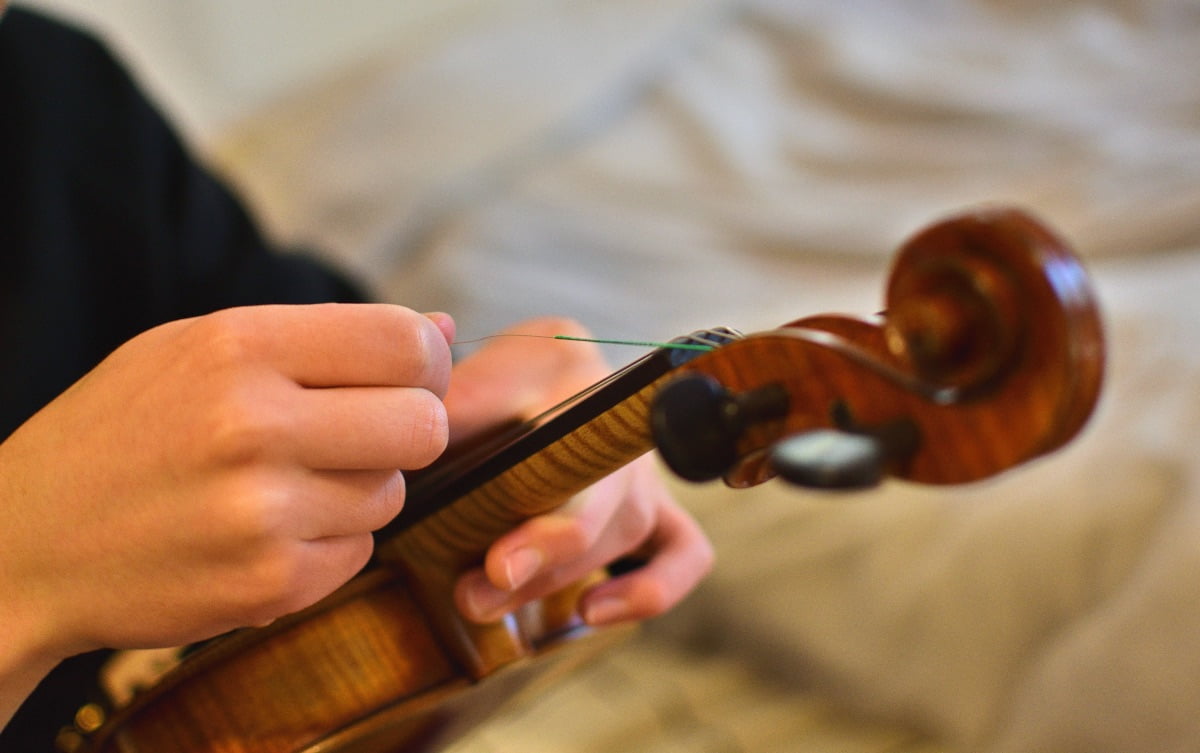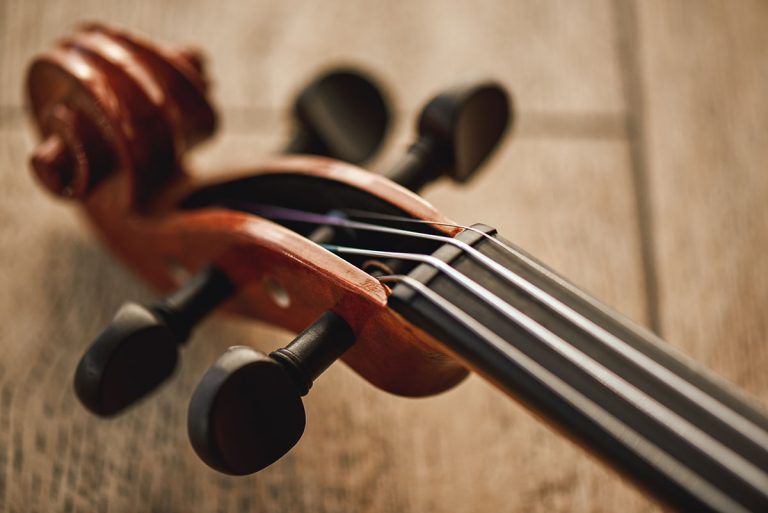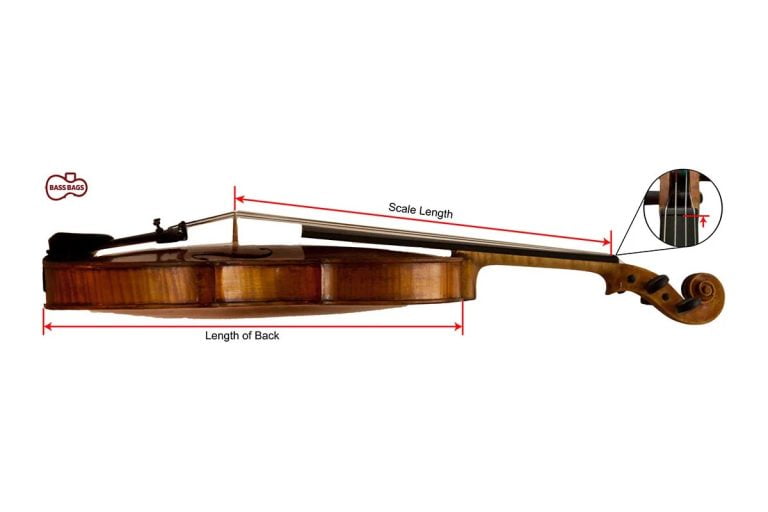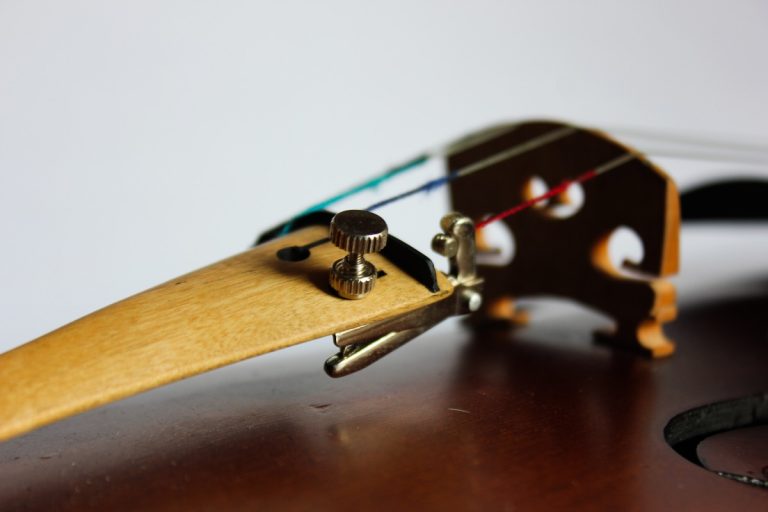How Often Should You Change Your Violin Strings?
Introduction
As a passionate violinist, you understand the importance of maintaining your instrument. One crucial aspect is knowing how often to change your violin strings. In this article, we will explore the ideal timeline for changing strings and factors that may impact this decision. Additionally, we will share how you can purchase high-quality strings and get them fitted by our team of experts.
Frequency of Changing Violin Strings
There is no one-size-fits-all answer to this question. The frequency depends on several factors:
- Playing habits: The more you play, the faster your strings wear out. A professional violinist may change strings every 3-4 months, while a beginner or casual player may only need to replace them once a year.
- String type: Different strings have varying lifespans. Synthetic-core strings tend to last longer than gut-core strings, while steel-core strings often have the longest lifespan.
- Climate: Humidity and temperature fluctuations can affect your strings’ performance. Extreme weather conditions may require more frequent string changes.
- Sound quality: Trust your ears. If you notice a decline in sound quality, it’s time to change your strings.
- Maintenance: Regularly cleaning and maintaining your strings can prolong their life. Wiping them down after each session helps remove dirt and oils that contribute to wear.
A General Guideline
Given these factors, a good rule of thumb is:
- Professional players: Every 3-4 months.
- Intermediate players: Every 6-8 months.
- Beginners: Once a year.
Remember, these are general guidelines. Always listen to your instrument and pay attention to any signs of wear or sound degradation.
Signs It’s Time to Change Your Strings
Here are some indicators that it’s time to replace your violin strings:
- Fraying: Strings may start to unravel, especially near the bridge or nut. This affects sound quality and playability.
- Discolouration: Strings lose their shine and become discoloured due to accumulated dirt and oils.
- Difficulty tuning: Worn-out strings are more challenging to tune and may not hold their pitch.
- Sound quality: Dull, lifeless, or inconsistent sound is a clear sign that it’s time for new strings.
Where to Buy and Fit Your Violin Strings
To ensure the best quality and performance, we recommend purchasing your violin strings from our Violin Strings for Sale page. We offer a wide variety of strings to suit every player’s needs.
If you need assistance in fitting the strings, don’t hesitate to visit us. Our team of experts will be more than happy to help you. To schedule an appointment or for any inquiries, please visit our Contact Us page.
Conclusion
Changing your violin strings is essential for maintaining your instrument’s playability and sound quality. Although there isn’t a strict timeline, being aware of factors like playing habits, string type, and climate will help you determine the right moment to replace your strings. Most importantly, trust your ears and always be attentive to your instrument’s needs. And remember, we’re here to provide you with top-quality strings and professional fitting services whenever you need them.
Frequently Asked Questions
Can I change all my violin strings at once?
It’s recommended to change one string at a time to maintain the tension on your violin’s bridge and prevent it from collapsing or moving.
How long does it take for new violin strings to settle?
New strings may take anywhere from a few hours to a few days to fully settle and stretch. During this period, you’ll need to tune your violin more frequently as the strings adjust.
Can I mix different types of violin strings on my instrument?
Yes, you can mix different types of strings to achieve your desired sound and feel. However, it’s essential to make sure the strings you choose are compatible with your instrument and playing style.
How can I extend the life of my violin strings?
To prolong string life, clean your strings after each use, store your violin in a stable environment with consistent temperature and humidity, and use quality rosin. Proper maintenance goes a long way in extending string life.
How do I know if my violin strings are too old?
Old strings may lose their tonal quality, become difficult to tune, feel unresponsive, or show visible signs of wear. If you notice any of these signs, it’s time to replace your strings.
Is it necessary to replace all strings at once, or can I replace just one?
You can replace just one string if it’s damaged or worn out, but it’s a good idea to change all strings simultaneously to maintain balanced sound and playability. However, if you’re on a tight budget or only have issues with one string, you can replace it individually.
Do different string materials affect the sound of my violin?
Yes, different string materials produce different tones and characteristics. Gut core strings provide a warm, rich sound, while synthetic core strings offer a more focused and balanced tone. Steel core strings are known for their bright, powerful sound and quick response.
Should I change my strings before a performance?
Ideally, you should change your strings at least a week before a performance to allow them to settle and stretch. This will help avoid tuning issues and ensure that your violin is ready for the performance.
How can I dispose of my old violin strings?
You can recycle steel strings at a local metal recycling centre, while synthetic and gut strings can be disposed of in the regular household waste. Be sure to cut your old strings into smaller pieces to prevent them from tangling or causing harm to animals.
Can I change my violin strings myself, or should I have a professional do it?
Changing violin strings is a relatively simple process that most players can do with little practice. However, if you’re unsure or uncomfortable with the process, it’s always a good idea to consult a professional luthier or teacher for guidance.
How can I avoid breaking a string while changing them?
To prevent breaking a string during the changing process, make sure to loosen the peg gradually and avoid applying too much tension too quickly. Also, ensure that the string is properly aligned with the notches on the bridge and nut to prevent unnecessary stress.
How can I tell if my violin needs new strings or if a different issue affects the sound?
If you’re unsure whether your strings are the issue, you can check for other factors that may affect your violin’s sound, such as the bridge, soundpost, and tailpiece. A professional luthier can help diagnose any issues and recommend the appropriate course of action.
Is there a specific order in which I should change my violin strings?
There is no strict order for changing violin strings, but a common practice is to start with the G string and move up in pitch (G, D, A, E). This allows you to maintain tension on the bridge and makes it easier to replace one string at a time.
Can old strings cause damage to my violin?
Old strings can potentially cause damage to your violin, especially if they break unexpectedly. Worn strings can also exert uneven tension on the bridge, leading to warping or misalignment. Regularly changing your strings can help prevent these issues and keep your instrument in optimal condition.
What is the best way to clean my violin strings?
To clean your violin strings, gently wipe them with a soft, lint-free cloth after each use. This removes rosin dust, dirt, and oils from your fingers, helping to maintain the strings’ performance and longevity. Avoid using harsh chemicals or abrasive materials, as these can damage the strings and shorten their lifespan.




